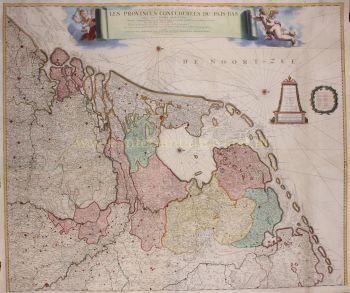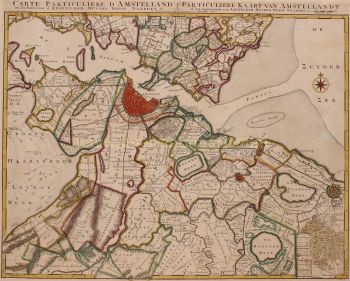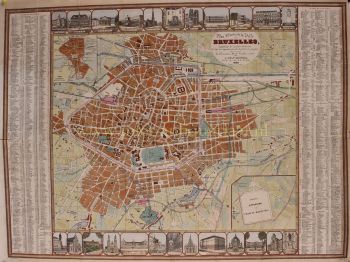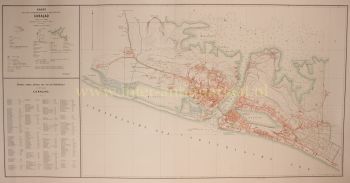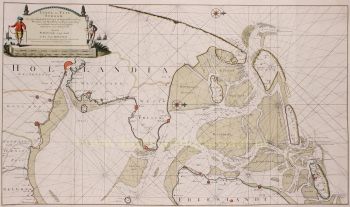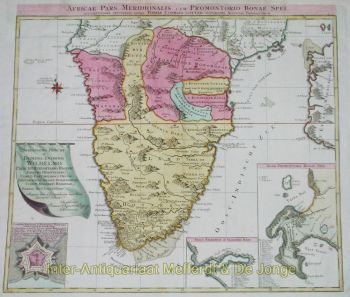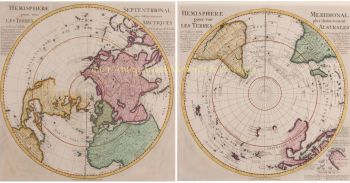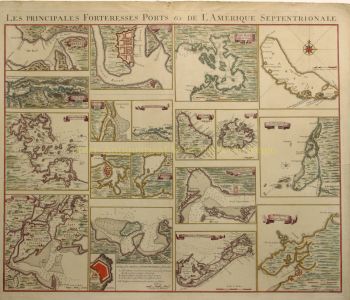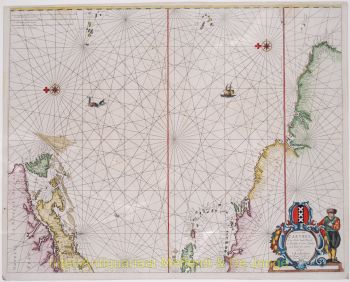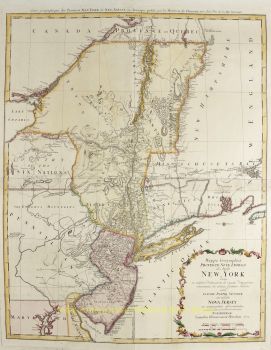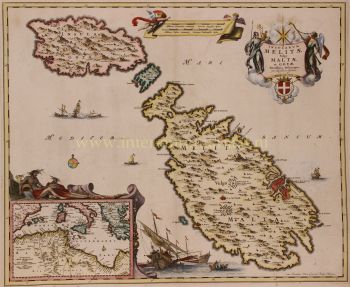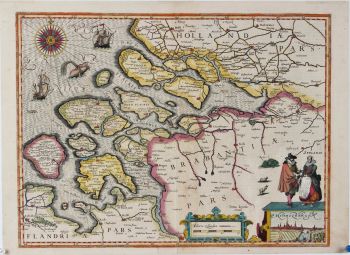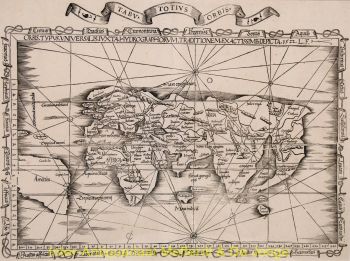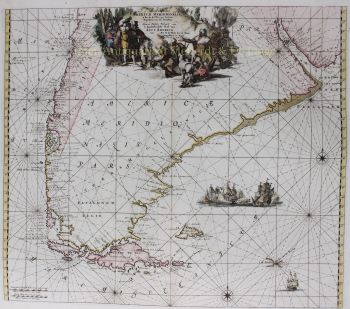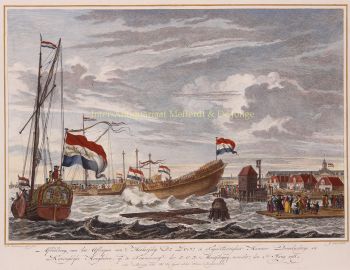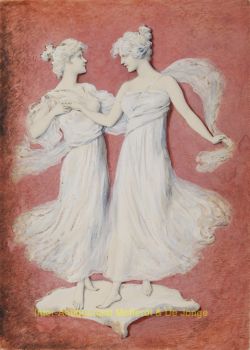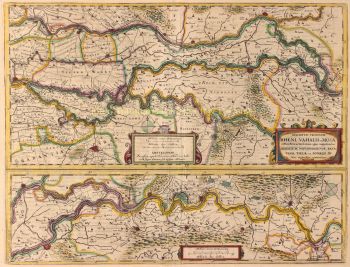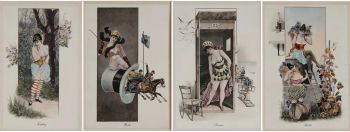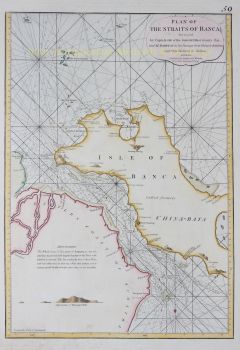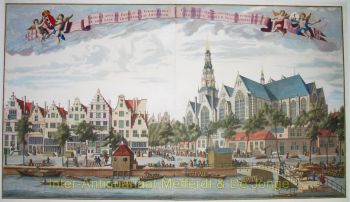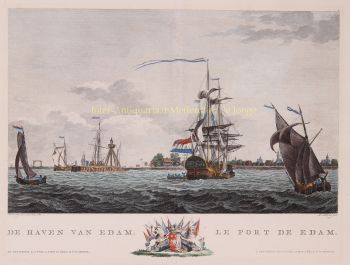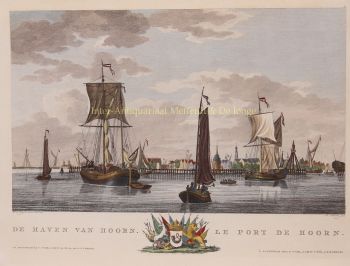Carte du monde 1745
Covens and Mortier
€ 2.250
Inter-Antiquariaat Mefferdt & De Jonge
- Sur l'oeuvre d'artMappe-Monde Dressé sur les Observations de Mrs. De L'Academie Royale des Sciences et quelques autres et sur les memoires les plus recens Par M. De L'Isle. Copper engraving published by Covens & Mortier in Amsterdam 1745. Coloured by a later hand. Size: 50,8 x 63,5 cm. Guillaume De L'Isle's world map was originally published in 1700 and then revised and republished throughout the 18th century by De L'Isle and by subsequent map publishers. Dutch publishers Covens & Mortier's first version of De L'Isle's map was produced in 1720 adding the seascape with ships on the horizon at the bottom decorated with a second cartouche in the shape of a sea monster with a mermaid, merman and dolphins. They issued a later edition of that map (shown here) in about 1745 with the additional subtitle "Nouvellement corrigée apres les dernieres Decouvertes faites par l'Academie de Petersbough." The map consists of two central hemispheres, eastern and western, surrounded by four smaller polar projections. The right hand projections focus on the Northern Hemisphere while the left hand projections depict the Southern. At top center there is an elaborate decorative cartouche with various allegorical elements depicting the four great continents in female form, from top left: America, Europa, Africa, and Asia. The routes of a number of the most famous explorers of the major oceans of the world are shown from 1542 to approximately 1730, ending with the Russian voyages of Chirikov and Bering. Some of the more noteworthy features of the map includes the Russian explorations along the Northwestern coast of America, Aleutian islands shown in a semi-mythical configuration and attached to a highly conjectural Alaska; Edmund Halley's sighting of Antarctic ice; Bouvet's large Cap de la Circoncision; A depiction of the tracks of François Pelsaert's route from Australia to Java; Carpentaria attached to New Guinea; Abel Tasman's route, along with a depiction of Tasmania, distinctly separate from Australia. The map also retains one of the more curious peninsula depictions of California. Price: Euro2.250,-
- Sur l'artiste
Covens et Mortier (1721 - c. 1862) était une maison d'édition d'Amsterdam, le successeur du vaste empire de l'édition construit par Pierre Mortier (1661 - 1711).
La carte de Covens et Mortier est souvent critiquée comme dérivée - mais ce n'est pas tout à fait le cas. Pierre Mortier vécut à Paris de 1681 à 1685. Il y noua des relations étroites avec les plus grands cartographes français de l'époque, dont De L'Isle et D'Anville.
Son modèle commercial reposait sur l'utilisation de la technologie et de la sophistication de l'impression néerlandaise pour copublier une cartographie française de pointe. A la mort de Mortier en 1711, son entreprise est reprise par son fils, Cornelius Mortier (1699 - 1783). Cornelius épousa la sœur de Johannes Covens (1697 - 1774) en 1721 et, en partenariat avec son beau-frère, fonda la société Covens et Mortier.
Sous l'empreinte Covens et Mortier, Cornelius et Johannes ont continué dans le modèle de Pierre de publier les œuvres françaises les plus récentes avec permission. Ils sont rapidement devenus l'une des entreprises d'édition néerlandaises les plus importantes et les plus prolifiques du XVIIIe siècle.
L'entreprise et ses successeurs ont publié des milliers de cartes sur une période de 120 ans, de 1721 au milieu des années 1800. Au cours de leur longue vie, la firme Covens and Mortier a publié sous les noms de Covens and Mortier (1721 - 1778), J. Covens and Son (1778 - 94) et Mortier, Covens and Son (1794 - c. 1862).
Êtes-vous intéressé par l'achat de cette oeuvre?
Artwork details
Related artworks
- 1 - 4 / 7
- 1 - 4 / 24
- 1 - 4 / 12



